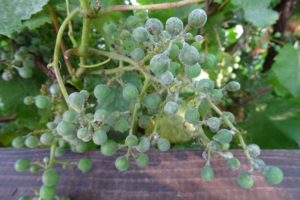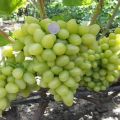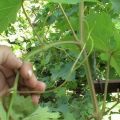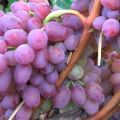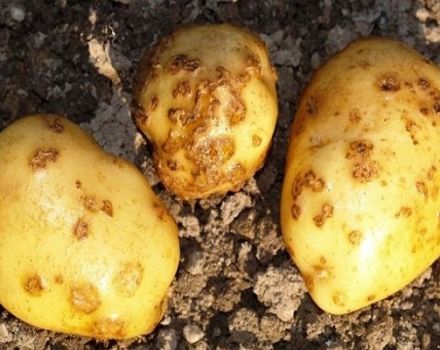Description of the Arcadia grape variety and yield characteristics, planting and care
Among gardeners, the Arcadia grape variety is very popular. And no wonder. After all, the vine is unpretentious, from year to year it pleases with a harvest of fragrant sweet berries and has good immunity to many diseases of the culture. When planning to plant this variety on your site, you should first familiarize yourself with the peculiarities of the cultivation of this culture and its advantages and disadvantages.
Breeding history of the variety
This variety was bred at the Tairov Odessa Scientific Institute. Two varieties were taken as a basis - Moldova and Cardinal. As a result of breeding work, it was possible to obtain a variety that took all the best characteristics of the source material.
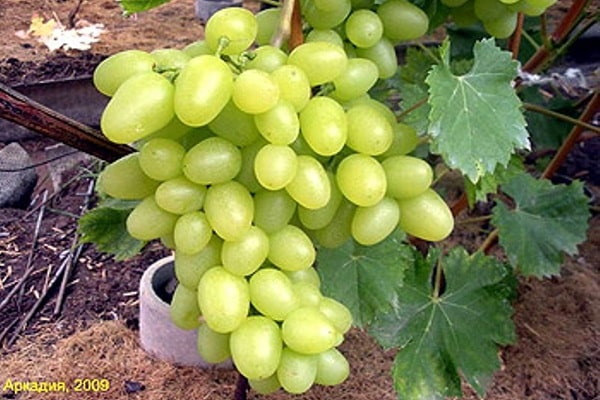
Thanks to Moldova, Arcadia has good adaptive characteristics, the seedling quickly takes root in a new place and is resistant to changes in climatic conditions. Temperature drops are not terrible for him, just like return frosts in spring.
And Cardinal gave Arcadia the high taste of berries, stable fruiting and resistance to the most common diseases of the vine.
Interestingly, despite the fact that the parent varieties are dark blue and purple in color, they are light yellow in Arcadia.
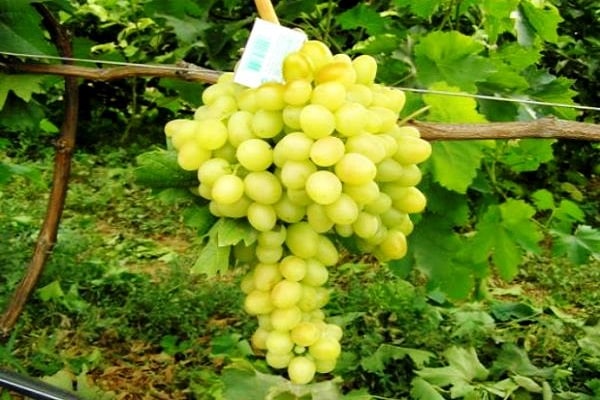
Description of grapes Arcadia
Studying the description of the Arcadia variety, you can decide whether it is suitable for growing in a specific area:
- Large berries with proper agricultural technology grow up to 12 grams in weight.
- The bush itself is vigorous with large, strong shoots.
- The leaves are slightly pubescent, the form is broad-lobed.
- The weight of one bunch of grapes reaches 750 grams, the structure of the cluster is dense.
- The grapes are sweetish, have a nutmeg aftertaste and a bright aroma.
- Suitable for growing both on large farms and small garden plots.
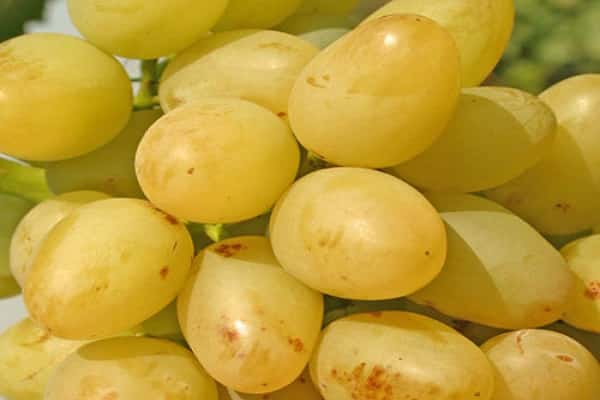
Distinctive characteristics
The Arcadia variety compares favorably with other grape varieties due to the following technical characteristics:
- Since both male and female flowers bloom on the vine, there is no need to plant pollinating plants. Moreover, Arcadia itself is a pollinator for other crop varieties.
- With proper care during the season, you can remove up to 18-25 kg of berries from each bush.
- Without additional shelter, Arcadia grapes can withstand frosts down to -20 degrees; at lower temperatures, it is worth taking care of the winter shelter of the vine.
- The sugar content of the berries is in the range of 16-17%.
- It transfers transportation over long distances without problems, which makes it in demand among farmers who grow grapes for sale.
- They make juice, wine, jam from Arcadia.
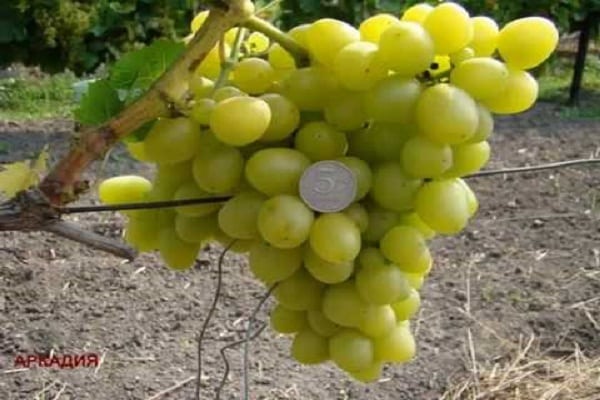
Advantages and disadvantages
The crop has several advantages and disadvantages that must be considered when growing a variety.
The indisputable advantages of gardeners include:
- Amicable, simultaneous maturation of all brushes.
- Stable fruiting and productivity.
- Fast adaptation to the place of planting and growing, high frost resistance.
- Early ripening.
- The versatility of the use of Arcadia berries.
- The first crop is removed from the vine already in the 3rd year after planting on the site.
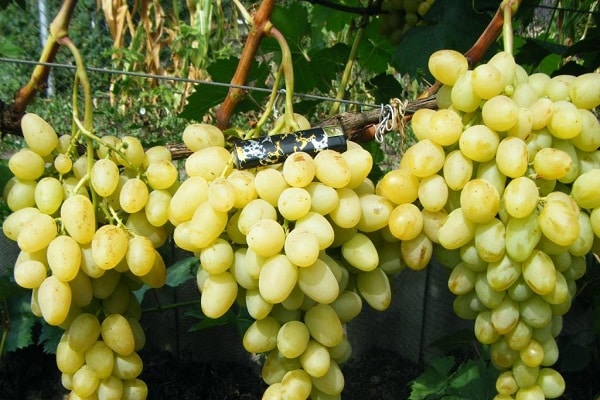
But there are also disadvantages that you need to pay attention to in order to get the declared yield:
- The vine does not tolerate high humidity and does not like the close location of groundwater.
- Cold wind and draft planting significantly reduce yields.
- Lack of sunlight and heat leads to a deterioration in the taste characteristics of the berries.
- Requires pruning, otherwise the berries ripen fine and sour.
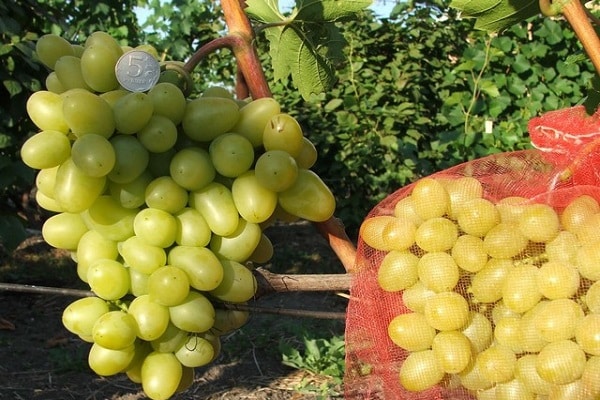
Ripening terms
Another advantage of the variety, gardeners call the ripening time of berries. The crop can be removed 110 days after the ovary appears. The terms differ in different regions, which directly depends on climatic conditions and weather.
Landing rules
The survival rate of the seedling and future yields depend on the correct planting. For placement, choose a place on the sunny side of the site, preferably near the wall of the building, in order to protect the seedling from a draft.
Rotted organic matter and mineral fertilizing are introduced into the planting pit. Water and mulch abundantly around the bush.
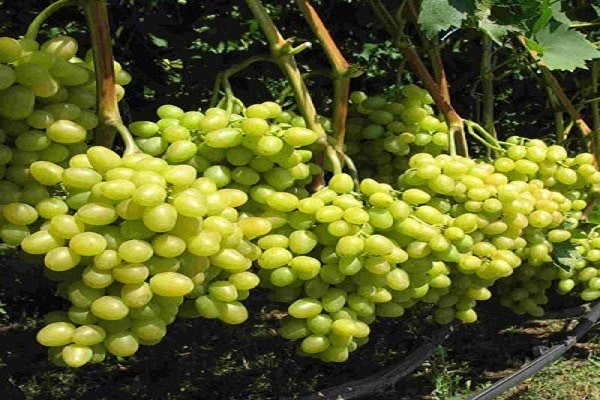
Care features
Vine care is standard: pruning, fertilization (potassium and phosphorus in the spring, organic matter in the fall), regular watering, especially in dry summers, and prevention of diseases and pests.
Breeding methods of the variety
In order to preserve varietal characteristics, Arkadia is propagated by cuttings. Another way in which the vine begins to bear fruit earlier is by grafting onto another bush. Experienced gardeners advise doing it in a split.
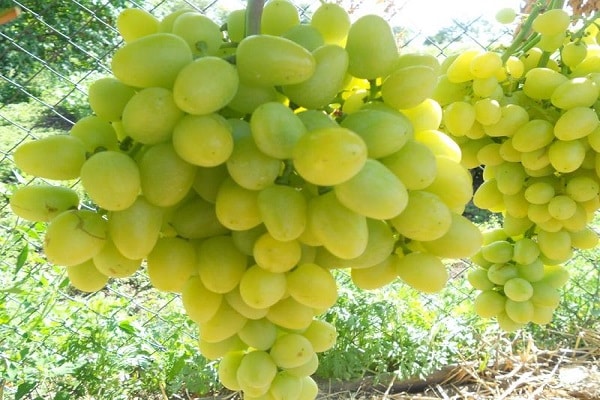
About diseases and pests
In order to prevent the appearance of diseases and pests, preventive treatments with fungicides and insecticides are carried out in spring and autumn. For these purposes, use "Nitrafen", ferrous sulfate of 3% concentration or a solution of Bordeaux liquid.


